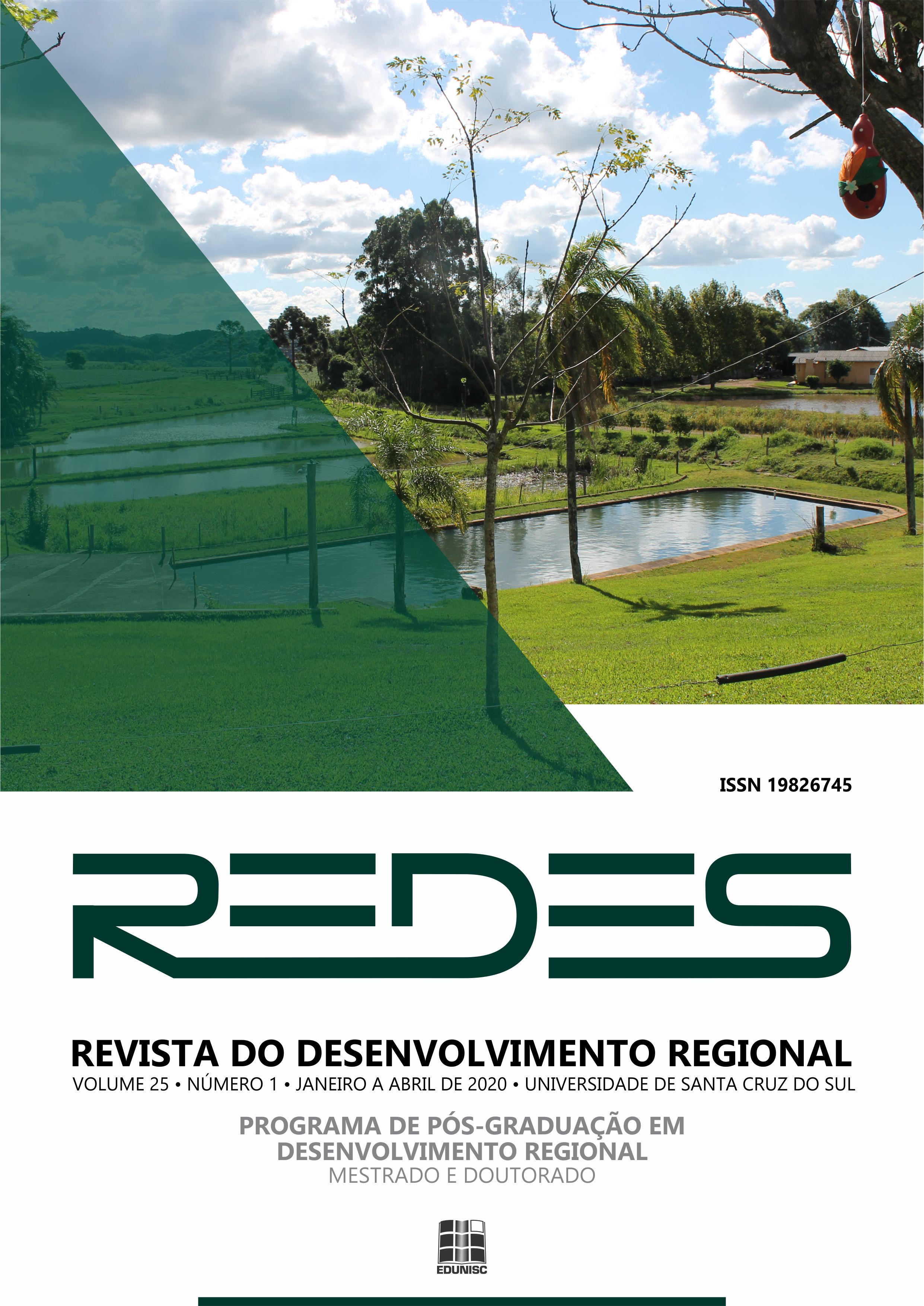Persistence and Dynamics of Intergeracional Mobility of Income na Education in the State of Ceará
DOI:
https://doi.org/10.17058/redes.v25i1.9779Keywords:
Markovian Matrices. Intergenerational Mobility.Human Capital. Ordered Logit.Abstract
This article aims to analyze the intergenerational mobility of education and income, seeking to identify its determinants in the state of Ceará in the period 1996 to 2009. The evaluation of the dynamics of intergenerational income and education was done by Markov transition matrices. On the other hand, the dynamic analysis of the determinants of intergenerational income and education was conducted through an ordered logit econometric model. The results suggest that during the study period there was a reduction in educational inequality and income in Ceará. In parallel, there is an increase in intergenerational mobility of income and education characterized by an expansion in average years of schooling, the continuing shrinkage of parents of low income and a sharp decline in educational persistence of illiterate parents. The results of the parametric model indicate that there is a strong influence of geographic location, of the racial and gender aspects, in addition to income and educational attributes of the fathers upon the path of education and income determination of the children.Downloads
References
BARROS, R. P. de, MENDONÇA, R. Os determinantes da desigualdade no Brasil. Texto para discussão 377, IPEA, 1995.
BARROS, R. P. de, CAMARGO, J. M., MENDONÇA, R. A estrutura do desemprego no Brasil. Texto para discussão, IPEA, 1997.
BEHRMAN, J., GAVIRIA, A., SZÉKELY, M. Intergenerational mobility in Latin America. Economia, V.2, n.1, p.1-44, 2001.
DUNN, C. The intergerational transmission of earnings: evidence from Brazil. University of Michigan, 2004.
FERREIRA, S.; VELOSO, F. Mobilidade intergeracional de educação no Brasil. Pesquisa e planejamento econômico, v.33, p.481-583, 2003.
FERREIRA, S.; VELOSO, F. Intergenerational mobility of wages in Brazil. Brazilian Review of Econometrics, v. 26, n.2, p. 181–211, 2006.
FIGUEIRÊDO, E. A. de; SILVA NETTO JUNIOR, J. L. Distribuição de capital humano e desigualdade de renda: Mobilidade intergeracional educacional e mobilidade de renda no Brasil. In: FÓRUM BNB DE DESENVOLVIMENTO E X ENCONTRO REGIONAL DE ECONOMIA. Anais..., Fortaleza, 2005.
FIGUEIRÊDO, E. A. de; SILVA NETTO JUNIOR, J. L. da; PÔRTO JUNIOR, S. da S. Distribuição, mobilidade e polarização de renda no Brasil: 1987 a 2003. Revista Brasileira de Economia, v. 61, n. 1, 2007.
GALOR, O., TSIDDON, D. Thecnological progress, mobility and economic growth. The American Economic Review, v.87, 1997.
GALOR, O., ZEIRA.,J. Income distribution and macroeconomics. Review of Economics Studies, v.60, 1993.
GEWEKE, J., MARSHALL, R., ZARKIN, G. Mobility indices in continuous time Markov chains. Econometrica. V.54, 1986.
GUJARATI, D. Econometria básica. Rio de Janeiro: Elsevier, 2006.
HOFFMAN,R.Transferência de renda e a redução da desigualdade no Brasil e cinco regiões entre 1997 e 2009.Econômica,Rio de Janeiro,v.8,N1,p.55-81,junho 2006.
INSTITUTO BRASILEIRO DE GEOGRAFIA E ESTATÍSTICA. Pesquisa Nacional por Amostra de Domicílios - PNAD. Rio de Janeiro: IBGE, 2009.
IPECE. Notas Técnicas. 2010. Disponível em: < http://www.ipece.ce.gov.br>.
LONG,J.S and J.FREESE. Regressions models for categorical dependent variables Using Sata. 2 end ed. College Station, TX: Stata Press, 2006.
MCCULLAG, P. Regression Models for Ordinal Data. Journal of the Royal Statistical Society, B. v. 42, n. 2, 109-142, 1980.
PASTORE,J. & N.SILVA. Mobilidade social no Brasil. São Paulo: Makron books,1999.
PERO, V.; SZERMAN, D. Mobilidade Intergeracional de Renda no Brasil. Pesquisa e Planejamento Econômico. V.38, n.1, abr.2008,p.2-35.
SOARES, S.S.D.Análise de bem-estar e decomposição por fatores da queda na desigualdade entre 1995 e 2004. Econômica, Rio de Janeiro,v.8, N1, p.83-115, junho 2006.
SHORROCKS, A. The measurement of mobility. Econometrica, v. 46, 1978.
ZIMMERMAN , D.J. Regression toward mediocrity in economic stature. American Economic Review, v.82, p.409-429, 1992.



